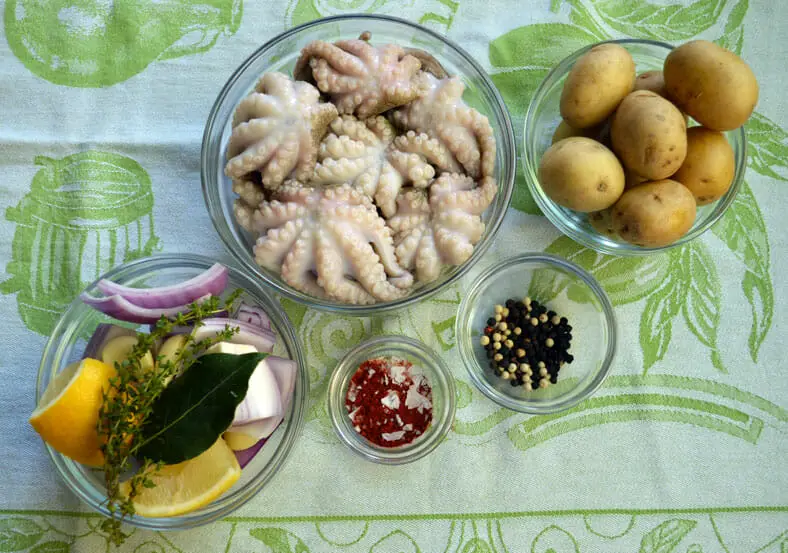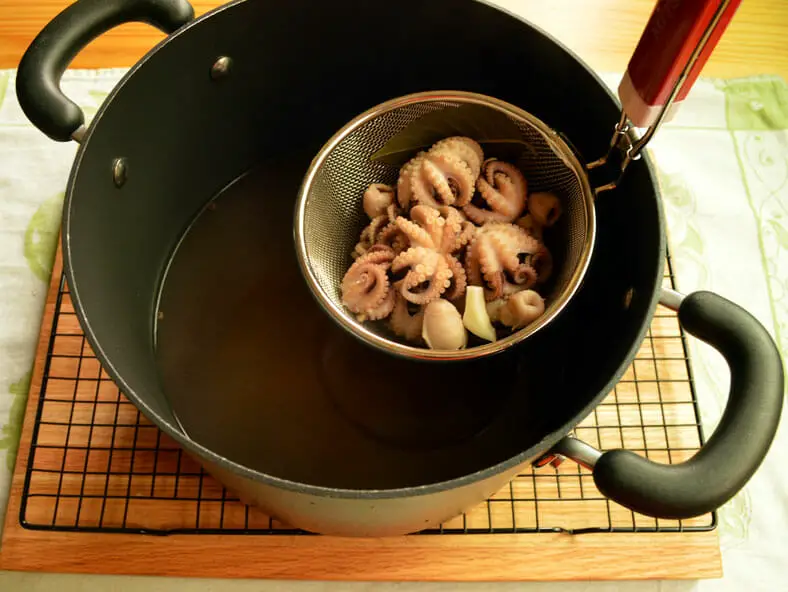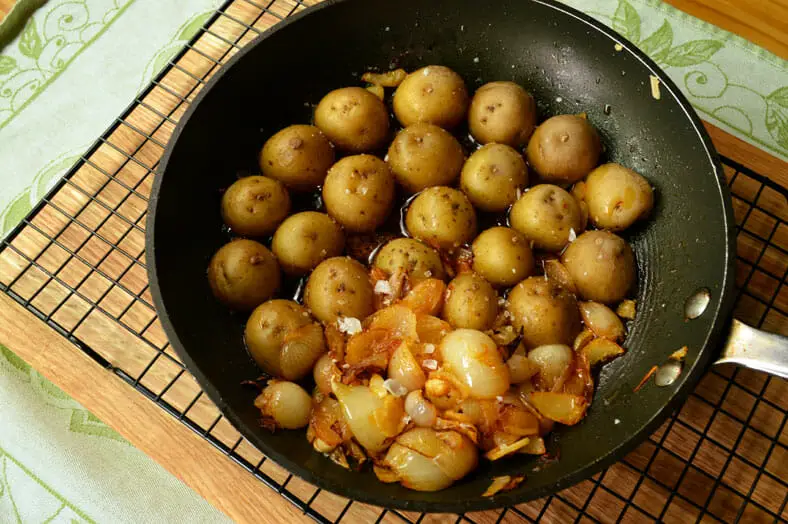Pulpo a la gallega was one of my favorite and more common dishes while living in Madrid. It’s a perfect embodiment of what tapas is, since it’s just as good as an afternoon snack as an appetizer for a larger meal.
Yet despite my frequent consumption of this delightful dish, I never actually learned how to make it.
Thankfully, we had a redeeming opportunity here in Arizona of all places. An amazing local supermarket here has been offering very high quality baby octopus on sale, and pulpo a la gallega was the first dish idea that came to mind.

About Pulpo a la Gallega
Technically, pulpo a la gallega isn’t even the real name. In Galicia, the Spanish region from where it originally hails, it’s actually called polbo a feira, or “octopus for the fair” in the regional Galician language.
Polbo a feira came about to feed the attendees of the region’s rural fairs and markets in centuries past. Since then, though, it has become more than just “fair food” and instead a widespread favorite for all of Spain with a new pulpo a la gallega pseudonym.
However you want to call it, the recipe itself isn’t terribly difficult, nor does it have very many ingredients. At its core, it’s really only octopus, potatoes, olive oil, paprika and cayenne.

It’s All In the Octopus (or Pulpo!)
What makes this pulpo a la gallega so special, however, is how you cook the octopus.
Octopus in general is a fairly fickle meat, and there definitely was a learning curve for Heather and I to clean, prepare, and cook it correctly. If we can help anyone else prevent making some of the same mistakes we did, we found this video to be particularly helpful for cleaning octopus quickly and efficiently.
And with any octopus recipe, you always run the risk of the meat not coming out tender enough. There are several techniques to help mitigate this, such as brining or beating, but we found that the most preferred way is to freeze the octopus overnight and cook once it has re-thawed as this helps it release excess water being held in the meat.
The original recipe has an interesting cooking technique to ensure the tentacles curl up closer to the body, which ultimately yields a fuller bite. If you alternate dunking the octopus in boiling water for 1 minute and then taking it out for 1 minute, you’re on your way to this desired curled tentacle end product. Don’t worry, though, you only have to dunk 3 or 4 times, after which point you can leave the octopus cooking and creating a delicious broth for 50 to 60 minutes.
We personally tweaked the recipe slightly to add other flavors to our broth as well, including peppercorns, lemon, bay leaves, garlic, and onions. This was more a personal choice and is completely optional, although we were certainly pleased with how it turned out (we actually ended up using the octopus broth to make really flavorful rice dish… more on that in a different post).

Once the octopus cooked for at least ~50 minutes (ours took closer to an hour), then all you have to do is take them out of the broth, cut them into bite-sized pieces, and season well with a hearty glug of olive oil, paprika, cayenne, and sea salt.
As for the potatoes, you’ll want to pre-cook them in boiling water (or in the octopus broth, which is what we did) for about 15 minutes. To finish cooking the potatoes, we put olive oil and a touch of our own hot chili oil in a saute pan over medium-high heat, and then we added halved fingerling potatoes with chopped up garlic, some boiler onions, and another big pinch of paprika. You’ll have to keep an eye on the garlic and onions tossing them frequently so they don’t burn, but you want a nice golden brown crisp on the potatoes. It’s best in this case just to keep them in place and not move them around too much, just enough to make sure they aren’t stuck to the pan. The garlic and onions will be cooked before the potatoes are done so you can scoop those out and put them to the side while potatoes continue to cook, frying for about 12-15 minutes in total.

To serve, you begin with a bottom layer of potatoes, seasoned with salt and pepper, and topped with the octopus. Another healthy glug of olive oil and paprika is also more than welcome here too. And it’s completely up to you whether you’d like to eat them hot or cold… it’s delicious either way.
Et voila! That’s all it takes to make pulpo a la gallega.
In the end, this recipe was a big success. The pulpo a la gallega came out just right and like I remember, and both Heather and I surprised ourselves with how well the octopus turned out.
This will certainly be a dish we revisit again soon.
What did you think of this recipe? Comment below and let us know!


I love octopus, but I’ve never attempted to make my own. This recipe looks delicious though!
Thanks Trang! Cooking octopus was a first for Heather and myself as well with this recipe. It did take us a few “behind the scenes” attempts to really learn it and get it right, but we found there isn’t too much of a learning curve to it. By now, we feel pretty confident we can cook octopus in any type of recipe now 🙂
If you try the recipe and cooking octopus, let us know how it goes!